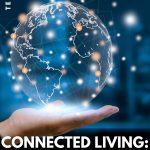Innovation is the heartbeat of progress, and examples of the Internet of Things (IoT) have emerged as a pulsating force, shaping the way we navigate our increasingly digital world. Examples of the Internet of Things are more common, and perhaps a bit less sci-fi in nature, than we might have guessed. In fact, examples of the Internet of Things (IoT) have emerged as game-changers, seamlessly connecting everyday objects and devices to the digital landscape. The heart of the IoT phenomenon is where ordinary objects transcend their conventional roles, becoming gateways to a realm of connectivity and intelligence.
As the digital and physical dimensions connect, examples of the Internet of Things stand as a beacon of transformation, propelling us towards an era where the inanimate becomes conversant and the once-separate spheres of existence meld into an intricate tapestry of communication. Imagine a realm where your morning routine is conducted by devices that communicate seamlessly, a symphony of actions with little more than a whisper of code. At its core, the IoT revolves around this harmonization—interconnecting everyday objects, devices, and systems through the internet. This interconnectedness awakens objects from their slumber, empowering them to collect and share data, weaving a web of communication that transcends the boundaries of the physical and digital worlds.
In this exploration, we delve into the very fabric of examples of the Internet of Things and the IoT itself, investigating the intricacies of its components, its transformative impact on various sectors, and the exciting promises it holds for the future. In examining examples of the Internet of Things, we can shed light on its significance, its applications, and the questions it raises.
The world around us is evolving, and the IoT stands as a testament to our capacity to innovate, connect, and craft a future where the physical and digital realms merge in progress.

Understanding the Internet of Things
The essence of the IoT lies in the interconnection of our familiar surroundings, as demonstrated by examples of the Internet of Things, where devices as commonplace as thermostats and refrigerators become intelligent hubs of communication. At its core, the Internet of Things (IoT) is more than just a technological buzzword; it’s a fundamental shift in how we perceive and interact with the world around us. Here are some insights into the IoT’s foundational principles to help you explore tangible examples of the Internet of Things across various domains.
Defining the IoT: A Web of Connectivity
Remember that morning routine you imagined just a moment ago? As your alarm clock gently wakes you up, it simultaneously sends a signal to your coffee maker to start brewing your favorite blend. This syncing of devices, all communicating with each other and you through the internet, is one of many examples of the Internet of Things.
The IoT comprises a complex network of objects, devices, and systems that are equipped with sensors, processors, and connectivity capabilities. These components work in tandem to gather, transmit, and receive data, leading to a web of interconnectivity that spans the digital and physical realms.
Key Characteristics of the IoT
Understanding the Internet of Things involves examining its core components, including sensors, devices, connectivity, and data analytics—essential elements that enable the seamless interaction seen in examples of the Internet of Things. The IoT is characterized by several key attributes that set it apart from traditional technology paradigms:
- Interconnectivity: The IoT thrives on the ability of devices to communicate and collaborate with each other. This interconnectedness allows for the seamless exchange of information and data-driven decision-making.
- Real-time Data Processing: One of the hallmarks of the IoT is its capacity to process vast amounts of data in real-time. This capability enables timely responses, automation, and the extraction of valuable insights.
- Automation and Intelligence: The integration of smart devices into our environments empowers them to perform actions without explicit human intervention. For example, a smart thermostat can learn your preferences and adjust the temperature accordingly.
- Ubiquitous Sensors: Sensors are the lifeblood of the IoT, serving as the eyes and ears of connected devices. These sensors collect data from the environment, enabling devices to understand their surroundings and make informed decisions.
- Diverse Applications: The IoT’s potential spans various domains, including healthcare, transportation, agriculture, manufacturing, and more. It promises solutions that improve efficiency, enhance convenience, and address complex challenges.
The Far-reaching Impact of the IoT
The impact of the IoT transcends industries and permeates our daily lives. From optimizing industrial processes to revolutionizing healthcare, the IoT has the potential to usher in a new era of connectivity and intelligence. Through the following examples of the Internet of Things, we’ll witness how the IoT is turning the ordinary into the extraordinary, connecting the physical world in ways previously unimagined.
Read More: 8 Best Smart Watches for Women Who Love Tech

Examples of The Internet of Things
IoT Applications in Smart Homes
The concept of a “smart home” has transitioned from the realm of science fiction to a tangible reality, thanks to the Internet of Things (IoT). Within the context of smart homes, numerous examples of the Internet of Things are evident—ranging from smart thermostats that learn and adapt to security systems that can be monitored remotely through connected devices. The IoT is revolutionizing the way we interact with our living spaces. From intuitive appliances to personalized comfort, smart homes showcase the practicality and convenience that the IoT brings into our everyday lives. Here, examples of the Internet of Things come to life.
Connected Appliances: A New Dimension of Convenience
Imagine stepping into your kitchen, and your coffee machine already knows your preferred brew. Your refrigerator sends you a notification when it’s time to replenish the milk. These scenarios exemplify the transformative power of connected appliances within a smart home environment. By embedding everyday devices with sensors and connectivity, the IoT enhances our lives with a new level of convenience and efficiency.
Smart Thermostats and Energy Efficiency
Heating and cooling our homes account for a significant portion of energy consumption. Smart thermostats, powered by the IoT, revolutionize how we manage our home’s climate. They learn your routines and adjust the temperature accordingly, optimizing energy usage. If you’re away, the thermostat can detect your absence and adjust settings to save energy. The result? Lower energy bills and a reduced carbon footprint.
Enhancing Security through IoT
Home security has also undergone a transformation through the IoT. Smart doorbell cameras allow you to see who’s at your door, even when you’re not home. Motion sensors can trigger alerts to your smartphone if unexpected movement is detected. These applications not only bolster security but also provide peace of mind, knowing you can monitor your home from anywhere.
Privacy and Security Considerations
While the benefits of a smart home are undeniable, it’s crucial to address privacy and security concerns. As our homes become increasingly connected, the data generated by IoT devices can be vulnerable to breaches and misuse. Manufacturers and users alike must prioritize strong security measures, such as encryption and regular updates, to safeguard against potential risks.
As technology continues to evolve, so will the possibilities for smart homes. The transformational impact of IoT-enabled smart homes is apparent in the improved energy efficiency, enhanced convenience, and heightened home security showcased in practical examples of the Internet of Things. The IoT will likely usher in an era of even more seamless integration, where devices intuitively understand our preferences and adapt to our needs. From energy management to entertainment, examples of the Internet of Things promise to make our homes not just smarter, but also more attuned to our unique lifestyles.
Read More: 7 Smart Kitchen Appliances You Shouldn’t Be Without

IoT in Industrial and Manufacturing Settings
In the industrial landscape, the Industrial Internet of Things (IIoT) takes center stage, with smart factories that autonomously optimize production processes and predictive maintenance systems that avert equipment failures before they occur, illustrating the transformative potential of examples of the Internet of Things in reshaping industries. The potential and examples of the Internet of Things extend far beyond our living spaces; it’s revolutionizing entire industries and reshaping the landscape of industrial and manufacturing sectors. Through the concept of the IIoT, factories are becoming smarter, more efficient, and better equipped to navigate the challenges of the modern world.
The Rise of the Industrial Internet of Things (IIoT)
While the IoT empowers homes with convenience, the IIoT empowers industries with optimization. In manufacturing, the IIoT involves connecting machines, sensors, and systems to a network, enabling data-driven decision-making and automation. This connectivity creates a digital ecosystem where machines communicate, analyze, and learn from one another, leading to improved productivity and efficiency.
Predictive Maintenance and Reducing Downtime
Imagine a factory where machines predict when they require maintenance before they fail. This concept is a reality with the IIoT. Sensors embedded in equipment monitor performance metrics, and data analysis reveals patterns that signify potential malfunctions. As a result, maintenance can be scheduled proactively, minimizing downtime and reducing costs associated with unexpected breakdowns.
For consumers, this means a lower risk of supply concerns.
Smart Factories and Real-time Insights
The IIoT is turning conventional factories into smart factories, where machinery operates with unprecedented intelligence and precision. By continuously collecting and analyzing data, machines can adjust their operations in real-time, optimizing processes for maximum efficiency. This leads to improved product quality, reduced waste, and enhanced overall performance.
Supply Chain Optimization and Beyond
The reach of the IIoT goes beyond the factory floor. It extends into supply chain management, enabling real-time tracking of inventory, shipments, and delivery schedules. This transparency enhances the efficiency of logistics operations, ensuring that goods reach their destinations on time and minimizing disruptions.
Challenges and Future Prospects
While the potential of the IIoT is immense, its implementation is not without challenges. Integrating legacy systems with modern IoT technology, ensuring data security, and managing the complexity of a networked environment are hurdles that need to be addressed. However, as technology continues to evolve, these challenges are being met with innovative solutions.
The future of industrial and manufacturing settings lies in a harmonious fusion of human expertise and technological prowess. Examples of the Internet of Things empower workers with real-time insights and allow them to focus on tasks that require creativity and critical thinking. As the IIoT evolves, it has the potential to unlock new realms of productivity, sustainability, and innovation, redefining how industries operate in the digital age.
Read More: Troll Patrol: 6 Things You Can And Should Do To Shut Down Trolling Online

IoT in Healthcare and Wearable Technology
The Internet of Things (IoT) isn’t limited to enhancing our homes and industries; it’s also making profound inroads into the realm of healthcare. Examples of the Internet of Things here range from remote patient monitoring to personalized health insights, revolutionizing the way we approach well-being. Wearable technology is an embodiment of the IoT’s potential, with wearable health devices and remote patient monitoring systems standing as prime examples of the Internet of Things enhancing patient outcomes.
Revolutionizing Healthcare through IoT
Imagine a future where healthcare isn’t confined to clinic walls but extends seamlessly into your daily life. The IoT is turning this vision into reality through a range of applications that enhance patient care, facilitate early detection, and improve treatment outcomes.
- Wearable technology, empowered by the IoT, is changing how we monitor and manage our health. From smartwatches to fitness trackers, wearable devices can capture and transmit data such as heart rate, steps taken, sleep patterns, and even stress levels. This real-time information provides individuals with insights into their well-being, empowering them to make informed decisions about their health and lifestyle.
- The IoT is bridging geographical barriers and enabling remote patient monitoring and telemedicine. Patients with chronic conditions can use wearable devices to transmit data to healthcare providers in real-time. This continuous stream of information allows doctors to monitor patients’ health trends and intervene proactively, minimizing the risk of complications.
Telemedicine, another outcome of the IoT, leverages video calls and remote diagnostics to provide medical consultations to patients anywhere in the world. This not only improves access to healthcare but also reduces the burden on physical healthcare facilities.
Challenges and Considerations
While the IoT brings undeniable benefits to healthcare, it also raises important concerns. Data security and patient privacy are paramount, as health information is highly sensitive. Ensuring that data is encrypted and stored securely is crucial to maintaining patient trust.
As wearable technology becomes more integrated into healthcare, issues related to the accuracy and reliability of data must be addressed. Healthcare professionals need to be equipped with tools to interpret and validate the data received from wearable devices.
As we move forward, the examples of the Internet of Things hold the promise of making healthcare even more personalized and predictive. Imagine a wearable device that detects early signs of a heart condition and alerts both the patient and their doctor. Through the integration of IoT-driven wearable technology, healthcare is transitioning from a reactive model to a proactive one, empowering individuals to take charge of their health like never before.
Read More: 5 Tips to Keep Your Kids Safe Online

IoT in Transportation and Smart Cities
The transformative reach of examples of the Internet of Things (IoT) extends to our cities and how we navigate them. The impact of the IoT on transportation systems and the emergence of smart cities, from easing traffic congestion to enhancing public safety, is shaping urban landscapes in ways that promise to redefine urban living.
IoT’s Influence on Transportation Systems
The daily commute can be a source of stress for many. However, the IoT is offering solutions to this age-old challenge by reimagining transportation systems through data-driven insights and automation.
Intelligent Transportation Systems (ITS): Redefining Commutes
Imagine a transportation system that adapts to real-time traffic conditions, reducing congestion and travel time. The IoT makes this vision possible through Intelligent Transportation Systems (ITS). Sensors embedded in roads, traffic lights, and vehicles gather data on traffic flow, allowing for dynamic adjustments to signals and routing. This not only minimizes traffic jams but also reduces emissions and fuel consumption.
Enhancing Public Safety Through IoT
Public safety is a top priority in urban environments, and the IoT is playing a pivotal role in making cities safer for their residents. Surveillance cameras equipped with IoT technology can detect suspicious activities and alert law enforcement in real-time. Similarly, emergency response systems can use the IoT to prioritize dispatch based on the severity and location of incidents.
The Emergence of Smart Cities
The fusion of the IoT with urban planning has given birth to the concept of smart cities—urban environments that leverage technology to improve quality of life, sustainability, and efficiency.
IoT’s Impact on Infrastructure and Services
In smart cities, everyday infrastructure and services are integrated into a cohesive network. Smart streetlights adjust their brightness based on ambient light and pedestrian activity. Waste management becomes more efficient as sensors in trash bins notify collection services when they’re full. These applications not only optimize resource utilization but also contribute to a cleaner and safer environment.
Balancing Technological Advancements with Privacy
As cities embrace the IoT, concerns related to data privacy and security come to the forefront. The collection of data from various sources, such as surveillance cameras and environmental sensors, requires stringent measures to protect citizens’ information. Striking the balance between technological advancements and personal privacy is crucial for building trust within smart city ecosystems.
Examples of the Internet of Things in shaping transportation systems and smart cities are only beginning. Current examples of the Internet of Things can be seen in traffic management solutions that optimize congestion and intelligent transportation systems that redefine urban mobility, but as technology continues to evolve, we can anticipate even more seamless integration of devices and data, resulting in more efficient transportation systems, reduced pollution, and safer communities. By harnessing the potential of the IoT, we’re moving toward a future where urban environments are not just interconnected, but also intelligent, making our cities more livable and sustainable than ever before.
Read More: 10 Ways to Make Money on the Internet When You Work from Home
The Road Ahead: A Connected Future
In exploring examples of the Internet of Things (IoT), we’ve witnessed the transformative power of technology in connecting our physical world to the digital realm. From smart homes that adapt to our needs to industrial processes that optimize efficiency, from wearable devices that monitor our health to transportation systems that reduce congestion, the examples of the Internet of Things have unveiled a level of innovation that is reshaping the way we live, work, and interact.
As we embrace examples of the Internet of Things and this technological revolution, it’s important to recognize its potential to bring about positive change across various domains. The convenience of connected devices, the efficiency of smart factories, and the personalized insights of wearable technology all contribute to a future that is more interconnected and intelligent.
However, along with the marvels of examples of the Internet of Things come important considerations. We must address challenges related to data security, privacy, and ethical use of technology. Striking a balance between innovation and safeguarding individuals’ rights is essential to ensuring that the IoT remains a force for good.
The rise of the IoT isn’t just a technological shift; it’s a societal transformation that invites us to think critically about how we want to shape the future. By staying informed about the evolving landscape of the IoT and actively participating in discussions surrounding its applications, challenges, and potential, we can collectively navigate this exciting new era.
As we move forward, let’s seize the opportunities presented by the IoT, explore its capabilities, and embrace a future where the physical world converges with the digital age. With examples of the Internet of Things as our guide, the possibilities are limitless.
WANT TO READ MORE?
Check out Daily Mom’s Tech section for more examples of the Internet of Things and other tech tips!
CONNECT WITH DAILY MOM
💖 NEWSLETTER: DAILY READS IN YOUR INBOX 💖
Sign up to receive our picks for the best things to do, see and buy so you can relax and focus on more important tasks! Let us help you be the best version of yourself you can be!
BE SOCIAL WITH US
📌 LOVE IT? PIN IT!📌












































